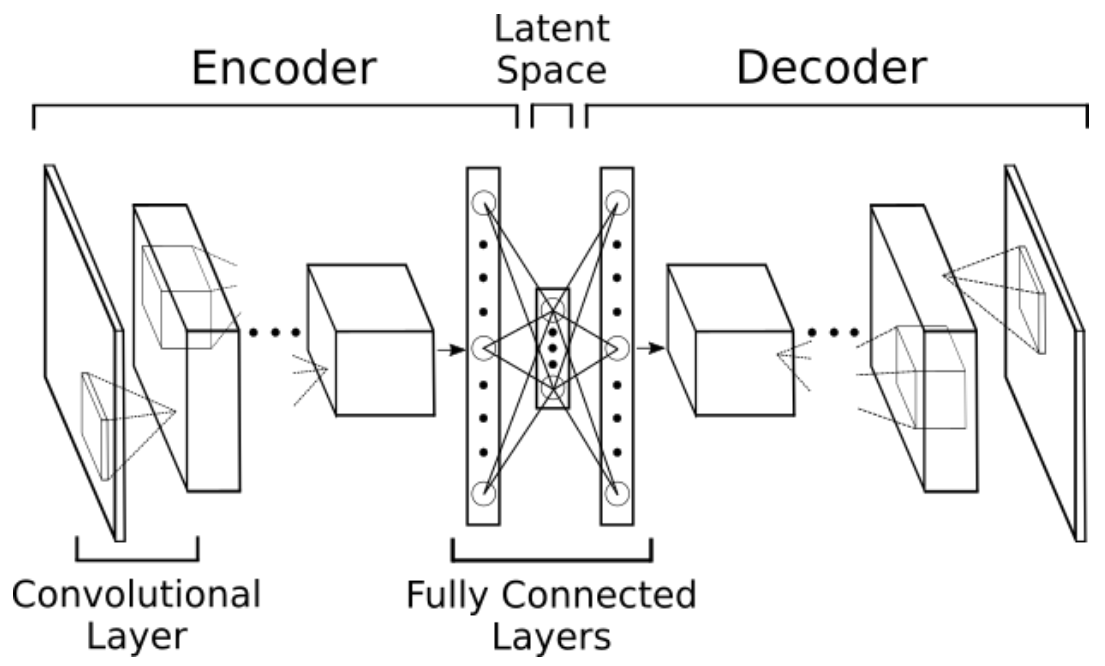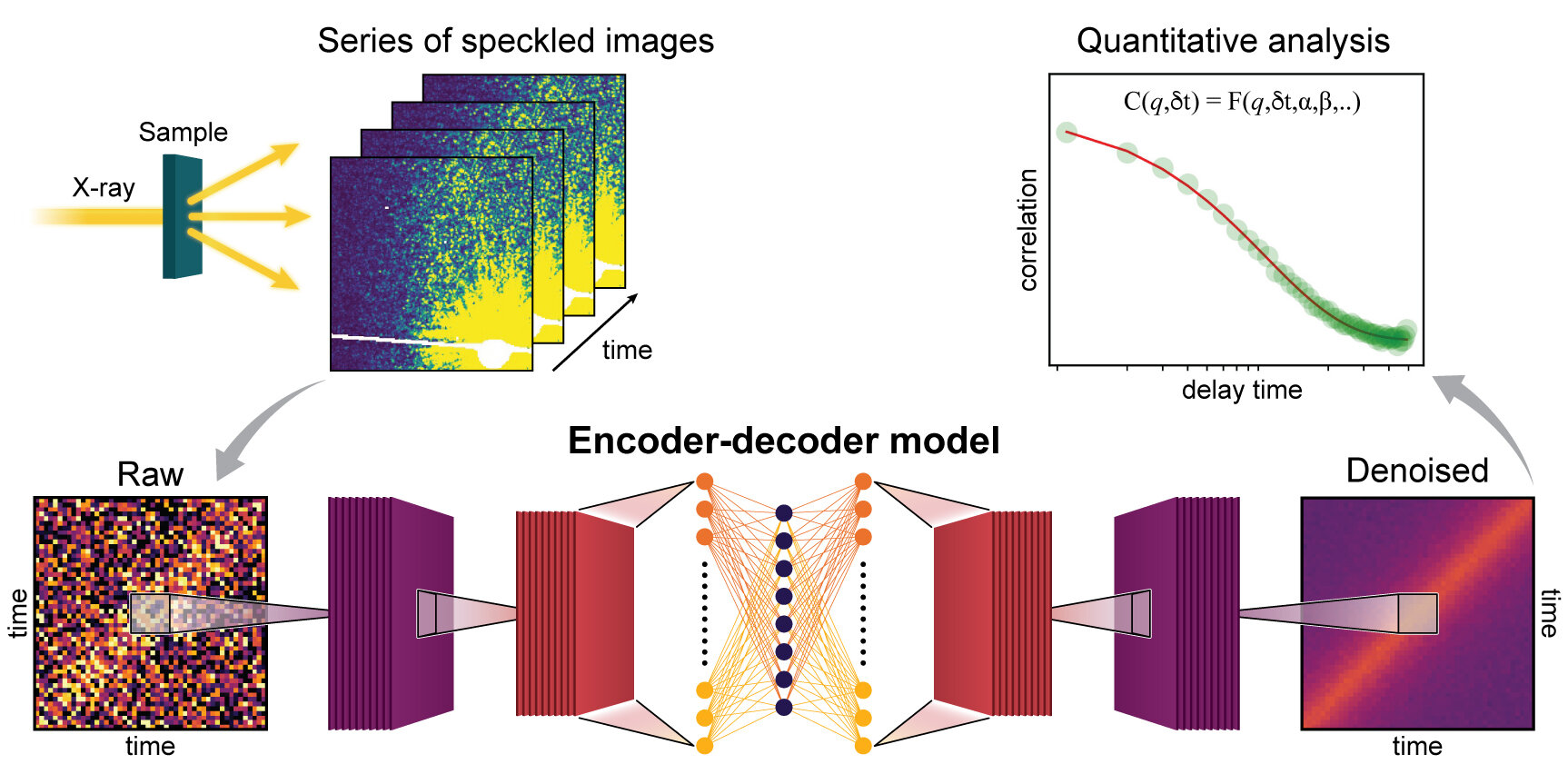Research
My research centers on uncertainty quantification, machine learning, and scientific computing. During my postdoc, I developed a new method for choosing the basis functions for Dynamic Mode Decomposition (a reduced-order modeling technique). I also worked on model structural inference and uncertainty quantification for dynamical systems. At Brookhaven, I focus on applying methods from machine learning and uncertainty quantification to the design of optimal experiments and to the automation of data processing. I led a project on using encoder-decoder neural networks to automatically denoise data from X-Ray Photon Correlation spectroscopy (XPCS) data. I am currently working on applying Bayesian inference to calibrate computational models in materials science to data.
You may find a list of my publications on my Google scholar page.
Cahn Hilliard templating effect
 Encoder-decoder neural network used in XPCS data denoising.
Encoder-decoder neural network used in XPCS data denoising.
 Encoder-decoder neural network and XPCS sample data and analysis (credit: Brookhaven National Laboratory). For details, see
Encoder-decoder neural network and XPCS sample data and analysis (credit: Brookhaven National Laboratory). For details, see